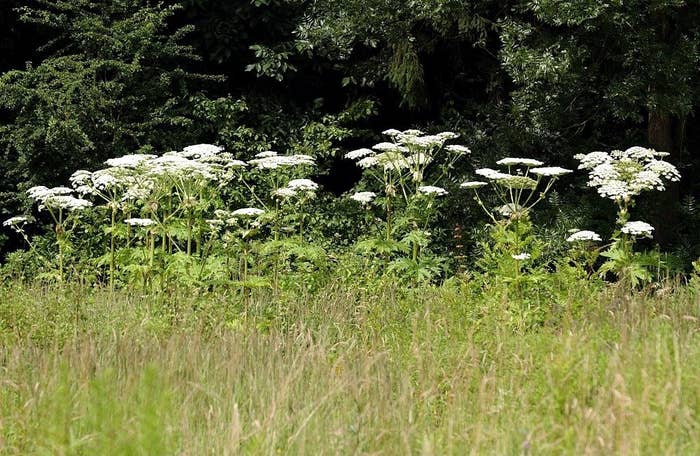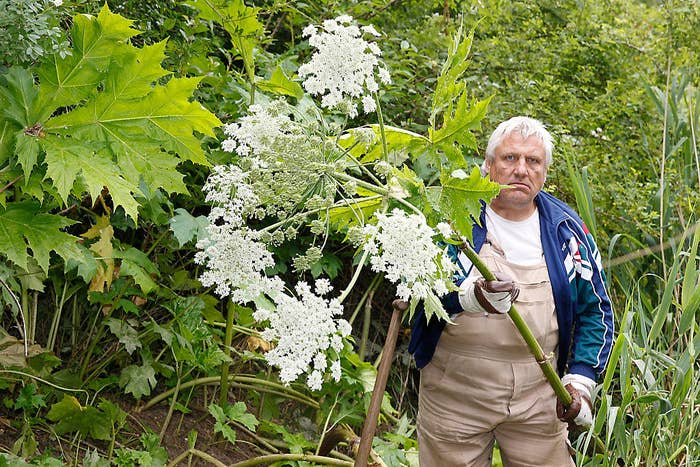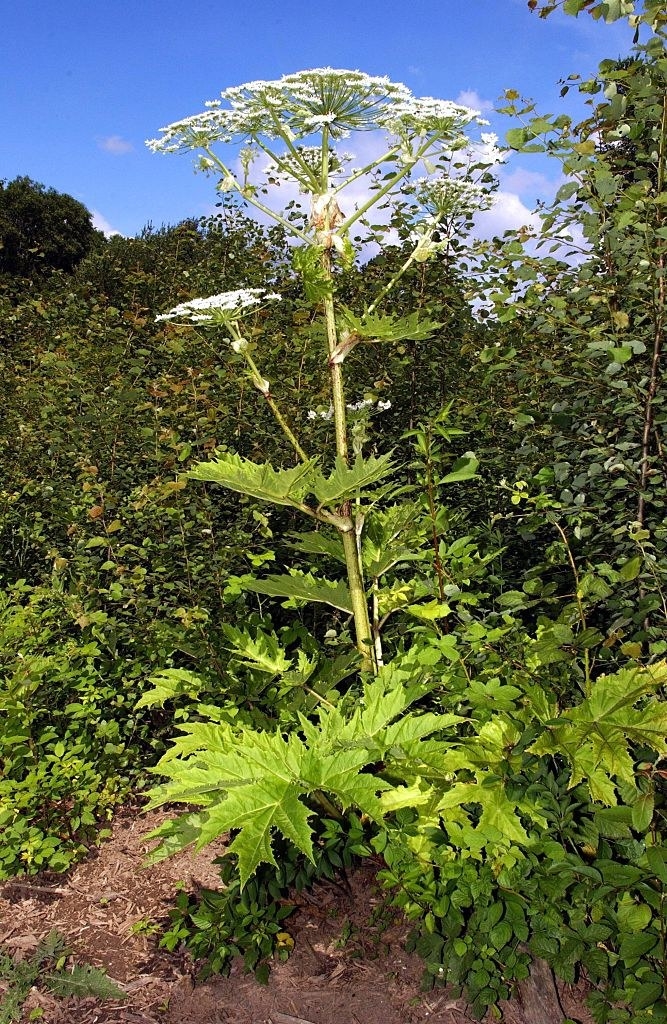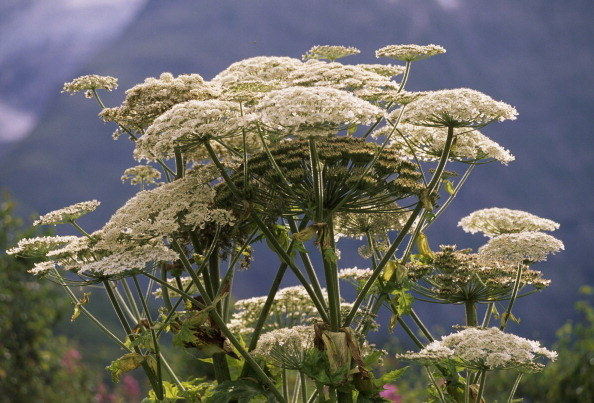This is the giant hogweed. Seems like a regular old plant, right?

WRONG. This is an evil, demon plant and you should avoid it at all costs.

Giant hogweed is an invasive species that's known to grow in some states in the US, but last week it was discovered for the first time in Virginia.
Giant hogweed, or Heracleum mantegazzianum, is a large, flowering, perennial plant. It's native to the Caucasus Mountain region in Asia and was introduced to the US in the early 1900s as a garden plant, according to the New York State Department of Environmental Conservation (NYSDEC).
It is an invasive species that is known to grow in New York, Vermont, Pennsylvania, New Jersey, Wisconsin, Michigan, Oregon, and Washington. Giant hogweed is listed as a noxious weed by the federal government, which means it's illegal to transport across state lines without a permit.
The Massey Herbarium at the Virginia Polytechnic Institute and State University, which researches plant species in the state, wrote in a Facebook post that it had identified Virginia's first giant hogweed population. The organization discovered about 30 plants in Clarke County, which is located in the Northern part of the state, about 60 miles west of Washington, DC.
This invasive species isn't just a problem for the environment — it's also a health hazard.
The giant hogweed's sap can cause blistering burns on the skin, long-lasting scars, and even permanent blindness.
This botanical nightmare can grow up to 14 feet tall and you'll find it in forests, yards, fields, and roadsides. Do not touch it.

The giant hogweed is an absolute unit. It can take a few years for the plant to mature and start producing flowers, which is when it's easiest to recognize. The hogweed can grow to towering heights and sprout leaves up to 5 feet wide and has flowers up to 2.5 feet wide.
These plants can also live for decades and have long taproots that make them especially hardy and difficult to remove. Giant hogweed can grow anywhere — gardens, backyards, along streams and rivers, hiking trails — so it's important to know what the plant looks like so you can avoid it in the future.
Giant hogweed is a tall plant with white flowers in umbrella-like clusters, lobed leaves, and stems covered in purplish-red spots. But the plant isn't always easy to identify and can be easy to confuse with other flowering plants like Queen Anne's Lace. Queen Anne's Lace, which is also known as wild carrot, is beautiful, harmless, and can be found in wedding bouquets and roadsides near you — so don't mistake it for the giant hogweed!
You can consult the NYSDEC hogweed identification guide to learn how to spot the dangerous plant.
Do not go near or touch this plant. The sap is concentrated on the stems but it can get anywhere on the plant or its flowers. If you need to remove giant hogweed on your property, wear gloves, cover any exposed skin, and wash all clothes and equipment that touch the plant afterward. Here's a complete list of hogweed removal safety guidelines.
If you are exposed to giant hogweed sap, wash your skin with cold water, stay out of sunlight, and consult a physician if you have concerns.

If the worst happens, there are steps you can take to ease the pain and reduce the severity of the reaction. First you should wash the area of skin immediately with cold water. Because the sap makes the skin photosensitive, keep the exposed area out of sunlight for at least 48 hours, according to NYSDEC. If you get sap in your eyes, wash them out immediately and wear sunglasses.
Once the skin reaction starts, you can use topical steroids, calamine lotion, or painkilling creams to ease inflammation and discomfort. It's a good idea to stay out of the sun and wear protective clothing or sunscreen until it has healed — the scars can be sensitive to sunlight for years.
If you ever have any questions or concerns about a reaction to giant hogweed sap, contact a physician.
There you have it — beware of this monster plant. It is out to get you.

UPDATE
This post has been updated to clarify the different treatment methods for a giant hogweed skin reaction.
